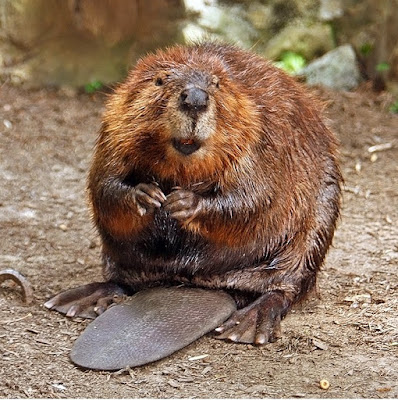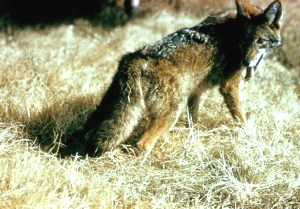| Edward Abbey writing in a fire tower |
It's the birthday of writer and environmentalist Edward Abbey
Meet Edward Paul Abbey, twentieth-century polemicist and desert anarchist, a character of elaborate contradictions and eccentricities whose words either infuriated or delighted his readers.
In a career spanning four decades, he wrote passionately in defense of the Southwest and its inhabitants, often mocking the mindless bureaucratic forces hell-bent on destroying it. "Resist much, obey little," from Walt Withman, was this warrior's motto.
While he was alive, attempts to label him in conventional terms nearly always fell short because he was neither left-wing nor right-wing, nor was he an outlaw. Abbey was a genuine rebel who simply did not believe in the moderns industrial way of life. He wrote against the grain, always choosing the path of the greatest resistance. Beginning in the 1950s, he depicted the Southwest not as a virgin utopia peopled by rugged individualists, but as a region under siege because of government and corporate greed, its people at risk of being cut off from the primary wellspring of their spiritual strength - the wild places. He's been dead for a while now, but the legend keeps in growing.
-- from Epitaph for a Desert Anarchist
He decided to hitch-hike cross-country, knowing that he might be drafted when he turned 18, and he fell in love with the West. He did get drafted, and spent a couple of years in Italy, then went to the University of New Mexico on the GI Bill. He worked as a seasonal ranger in national parks, and he published his first few novels.
Abbey was working as a school bus driver in Death Valley when he decided to write down an account of his time as a park ranger at Arches National Monument near Moab, Utah. It was published as Desert Solitaire in 1968.
In 1975, he published The Monkey Wrench Gang
He became known for his advocacy of environmental issues, criticism of public land policies, and anarchist political views. Writer Larry McMurtry referred to Abbey as the "Thoreau of the American West".
In July 1987, Abbey went to the Earth First! Rendezvous at the North Rim of the Grand Canyon where he was involved in a heated debate with an anarchist communist group known as Alien Nation over immigration. The incident is a chapter in his book Hayduke Lives.
Controversy continued when in 1987 the Utne Reader published a letter claiming that Abbey, Garrett Hardin, and the members of Earth First! were racists and eco-terrorists. Abbey was extremely offended, and demanded a public apology, stating that he was neither racist nor a supporter of terrorism. Abbey said that as far as "eco-terrorism," he supported tactics that were trying to defend against the terrorism he felt was committed by government and industry against living beings and the environment.
In 1984, Abbey went back to the University of Arizona to teach.
Edward Abbey died on March 14, 1989, at the age of 62, in his home in Tucson, Arizona from complications from surgery.
He left a message for anyone who asked about his final words: "No comment." He also left instructions on what to do with his remains: Abbey wanted his body transported in the bed of a pickup truck, and wished to be buried as soon as possible. He did not want to be embalmed or placed in a coffin. Instead, he preferred to be placed inside of an old sleeping bag, and requested that his friends disregard all state laws concerning burial.
"I want my body to help fertilize the growth of a cactus or cliff rose or sagebrush or tree. No formal speeches desired, though the deceased will not interfere if someone feels the urge. But keep it all simple and brief."He requested gunfire and bagpipe music, and "a flood of beer and booze! Lots of singing, dancing, talking, hollering, laughing, and lovemaking." (You can read online what happened to his body after his death.)
More at http://www.abbeyweb.net



